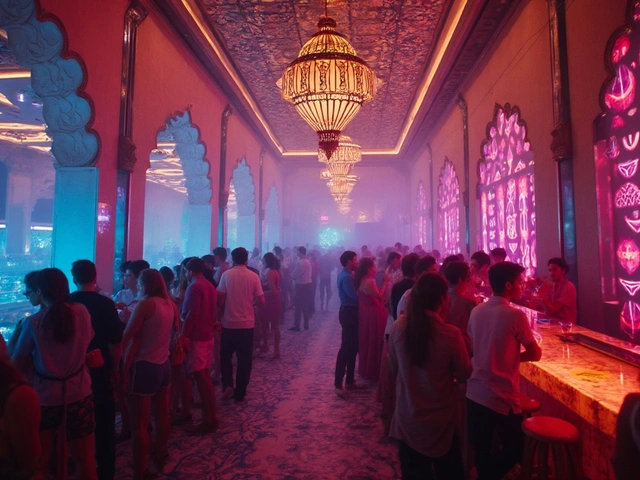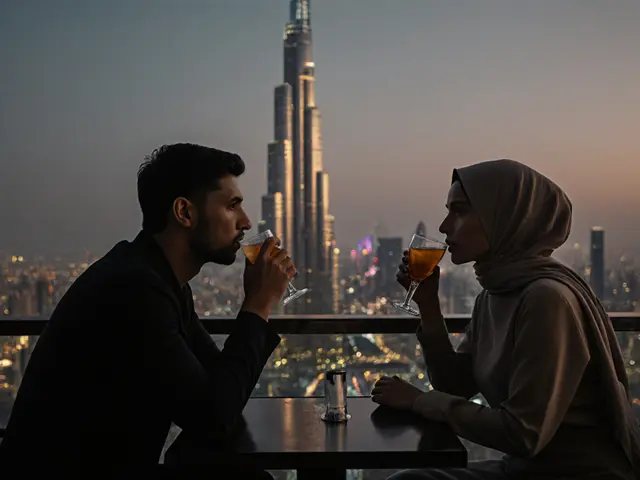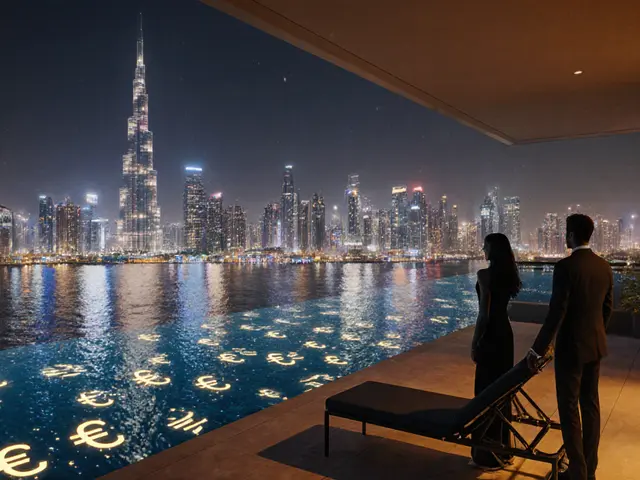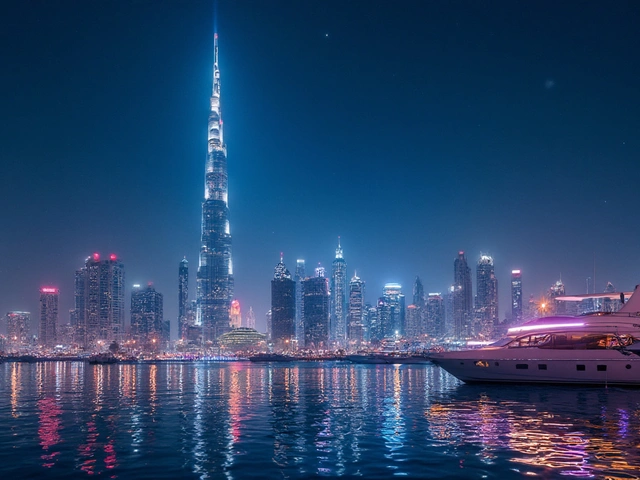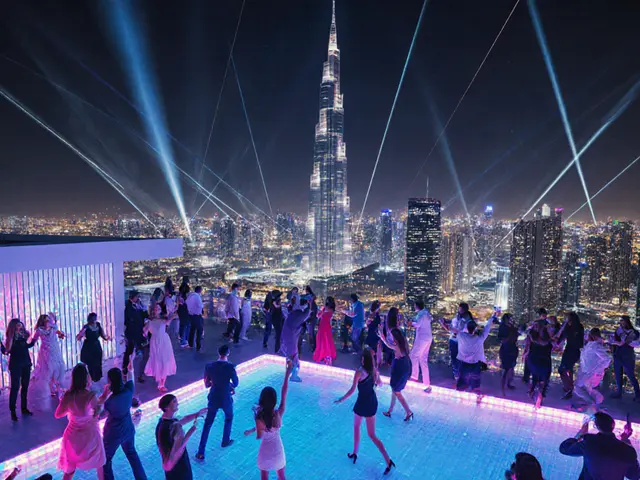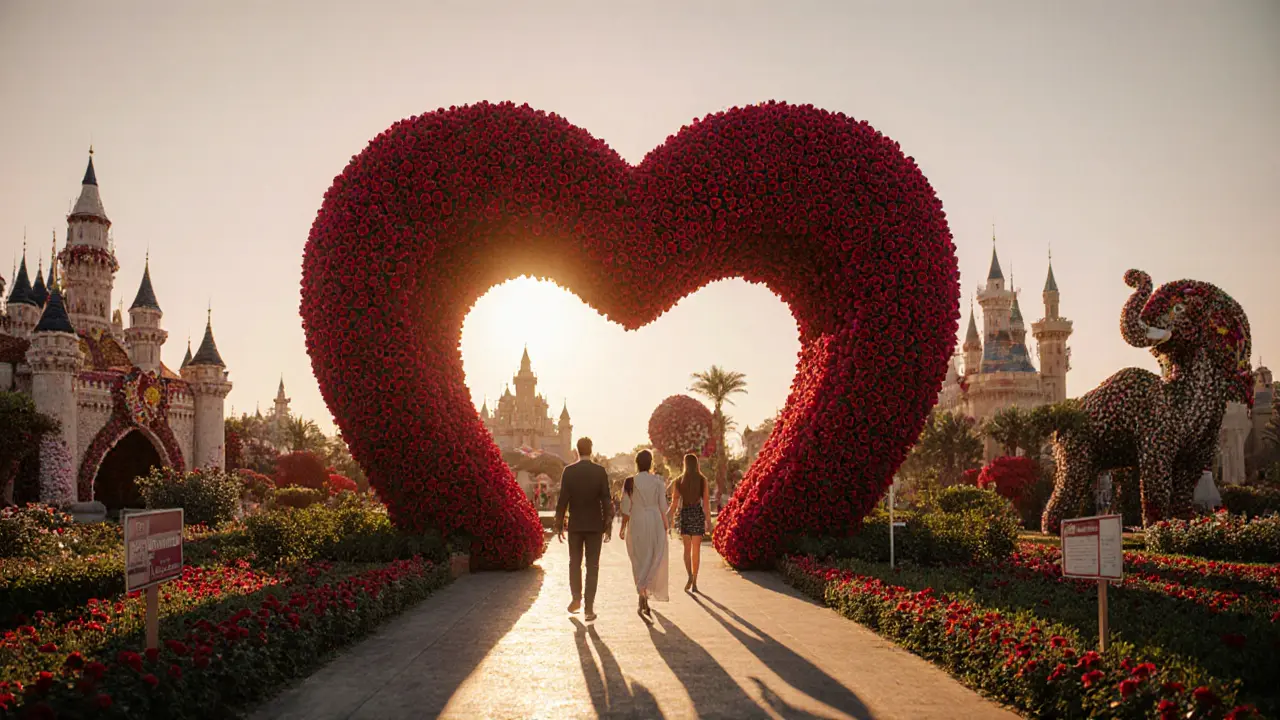
Imagine walking through a garden where flowers form castles, hearts, and even giant umbrellas-over 150 million of them. That’s not a dream. It’s the Dubai Miracle Garden, and it’s real. Open every year from November to May, this isn’t just a pretty park. It’s a full-scale floral engineering feat that turns nature into art, and it’s the largest flower garden on the planet.
What Makes Dubai Miracle Garden So Big?
Most flower gardens are measured in acres. Dubai Miracle Garden covers more than 72,000 square meters. That’s bigger than ten football fields packed with blooms. The numbers don’t lie: over 150 million flowers, arranged in 150 different designs. You’ll find everything from towering arches made of marigolds to life-sized elephants woven from petunias and roses. The garden doesn’t just grow flowers-it builds them into structures.
How do they do it in the desert? That’s the real trick. Dubai’s average summer temperature hits 45°C. Flowers don’t survive that. So the garden runs on a smart irrigation system that recycles water and uses drip technology to cut waste. Every drop is monitored. The soil is specially treated to hold moisture. And the flowers? They’re all chosen for heat tolerance-geraniums, begonias, marigolds, and petunias that can handle the sun without wilting.
Top Structures You Can’t Miss
Walking through the garden feels like stepping into a storybook. Here are the standout displays you won’t want to skip:
- The Butterfly Garden-A covered dome with over 15,000 live butterflies fluttering around you. It’s quiet, colorful, and feels like floating in a living painting.
- The Dubai Mall Replica-Built entirely from flowers, this miniature version of the famous shopping center has tiny floral escalators and bouquets for windows.
- The Heart-shaped Arch-The most photographed spot. A 16-meter-tall arch made of over 100,000 red roses. Couples come here to take pictures. Locals call it the ‘Love Tunnel’.
- The Castle-A full-scale floral castle with towers, flags, and even a moat filled with water lilies. It’s inspired by European castles but built with nothing but petals and stems.
- The Airbus A380-Yes, a real-sized airplane made of flowers. It’s parked on the tarmac with floral wings and petals for windows. People line up just to snap a photo next to it.
These aren’t static displays. Every year, the garden changes. New designs come in. Old ones get refreshed. Last season, they added a floral version of the Burj Khalifa. This year, they’re working on a giant floral dragon. You never see the same thing twice.
When to Visit
The garden is only open during the cooler months-from November to mid-May. Outside of that, the heat would kill the flowers. The best time to go? Early morning, right when it opens at 9 a.m. The light is soft, the crowds are thin, and the flowers look their freshest. By noon, the sun hits hard, and the place fills up fast.
Weekends are busy. If you’re staying in Dubai, go on a weekday. Tuesday and Wednesday are quietest. Even then, expect lines at the entrance. Buy your tickets online ahead of time. The price is 45 AED for adults, 35 AED for kids, and free for kids under 3. There’s no discount for residents, but you’ll save time and skip the ticket booth.
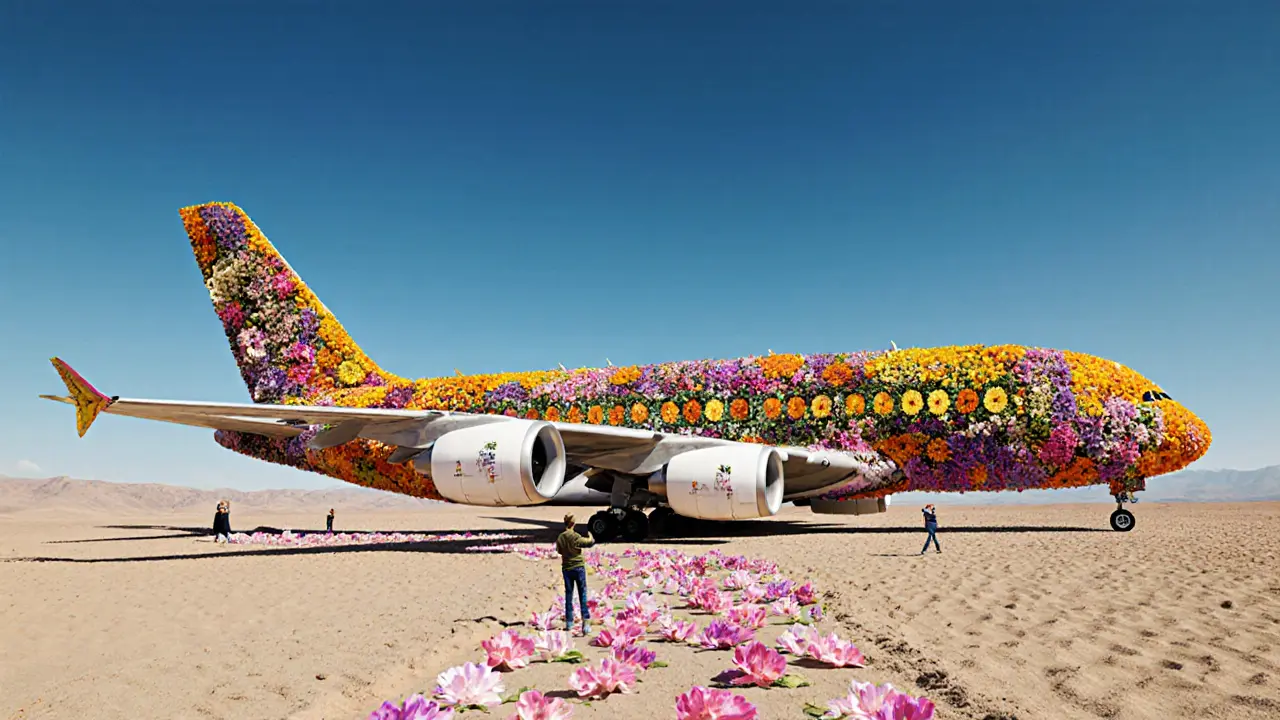
What to Bring
It’s not a casual stroll. You’ll walk over 4 kilometers through the garden. Wear comfortable shoes. Bring a hat. Sunscreen is a must-even in winter, the desert sun burns. There are shaded rest areas, but they fill up. Bring water. You can buy drinks inside, but they’re overpriced.
Photographers love this place. A tripod isn’t needed, but a good camera with manual settings helps. The lighting changes fast. Golden hour (just before sunset) is magical. The flowers glow, and the shadows make the structures pop. If you’re not into photography, just bring your phone. Every corner is Instagram-ready.
Is It Worth It?
Some people say it’s too touristy. Others say it’s the most beautiful place in Dubai. Both are true. It’s not a quiet, hidden oasis. It’s loud, bright, and packed with families, couples, and selfie-takers. But that’s part of the charm.
If you’ve seen the Burj Khalifa, the Palm Jumeirah, and the Dubai Frame, this is the next stop. It’s the one place where Dubai doesn’t show off steel and glass-it shows off color, life, and creativity. No other city on Earth could pull this off. Not in the desert. Not with this scale. Not with this detail.
It’s not just a garden. It’s a statement. A reminder that even in the harshest environment, beauty can bloom if you’re willing to work for it.
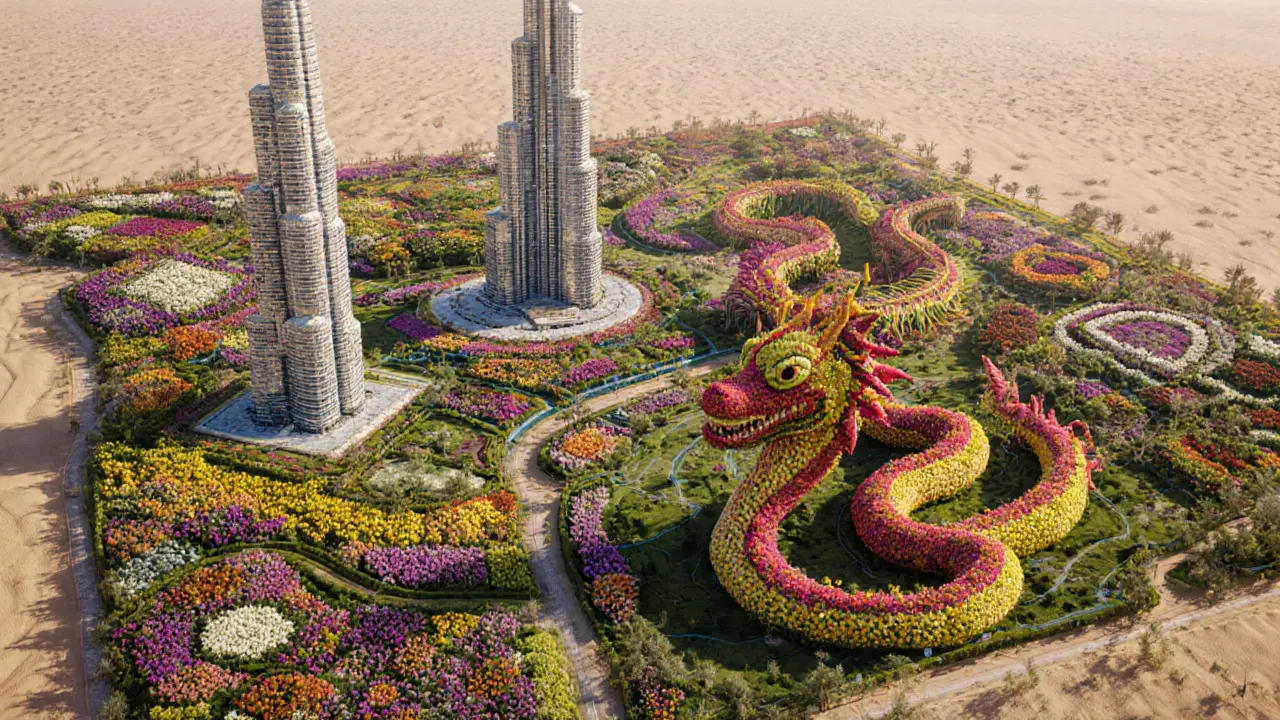
How to Get There
The garden is in Al Barsha, near the intersection of Sheikh Mohammed Bin Zayed Road and Al Ain Road. It’s about 20 minutes from downtown Dubai and 15 minutes from Dubai Marina. Taxis are easy to find. Use Careem or Uber-just type ‘Dubai Miracle Garden’ and it’ll take you straight there.
If you’re driving, parking is free. There are three large lots with signs in English and Arabic. The entrance is clearly marked with giant floral letters. No need for a GPS. You’ll see it from the road.
What’s Around
Don’t plan a full day here unless you want to spend hours walking. The garden takes about 2 to 3 hours to explore at a relaxed pace. If you’re hungry, there’s a small food court inside with local snacks-falafel wraps, fresh juices, and ice cream. Nothing fancy, but it’s clean and fast.
Close by, you’ll find the Dubai Butterfly Garden (a separate, smaller attraction) and the Al Qudra Lakes, a peaceful desert lake area perfect for a quiet picnic after the floral chaos. If you’re staying in the area, the Ibn Battuta Mall is a 10-minute drive away.
Final Thoughts
Dubai Miracle Garden doesn’t try to be subtle. It doesn’t whisper. It shouts with color. And that’s why it works. In a city built on excess, this garden feels like a joyful rebellion. It’s not about money-it’s about imagination. About turning something impossible into something real.
If you’re in Dubai between November and May, don’t skip this. Even if you think you’re not a ‘garden person’. Even if you’ve seen enough tourist spots. This one’s different. It’s not just flowers. It’s a celebration of what’s possible when you stop accepting limits.
Is the Dubai Miracle Garden open all year?
No. The garden is only open from November to mid-May each year. The extreme summer heat in Dubai makes it impossible to keep the flowers alive outside of these months. It reopens every November after a seasonal reset.
Can I bring food into the garden?
Yes, you can bring your own food and drinks. There are no restrictions on outside snacks. However, eating near the floral displays is discouraged to protect the plants. There’s also a food court inside if you prefer to buy something.
Are strollers allowed in the garden?
Yes, strollers and wheelchairs are welcome. The pathways are wide, flat, and paved. There are ramps at all major structures, and the garden is fully accessible. You’ll find rest areas with benches every few hundred meters.
How long does it take to walk through the entire garden?
Most visitors spend 2 to 3 hours exploring the entire garden at a relaxed pace. If you’re rushing and only taking photos, you can do it in 90 minutes. But if you want to enjoy the details, sit in the shaded areas, and take your time, plan for at least 3 hours.
Is the Dubai Miracle Garden suitable for kids?
Absolutely. Kids love the giant flower structures, the butterfly dome, and the chance to run through tunnels made of petals. There’s no height restriction, no scary rides-just colorful, safe spaces to explore. Entry is free for children under 3, and tickets for kids aged 3-12 are discounted.
Do I need to book tickets in advance?
You don’t have to, but it’s strongly recommended. Lines at the ticket counter can be over 30 minutes long on weekends. Buying online saves time and guarantees entry. Tickets are the same price whether bought online or at the gate.
Can I take professional photos or do a photoshoot?
Yes, personal photography is encouraged. For professional shoots, weddings, or commercial filming, you must get a permit from the garden’s management office. There’s a fee for commercial use, and you’ll need to schedule a time outside peak hours. Casual photos with phones or cameras are always free.
